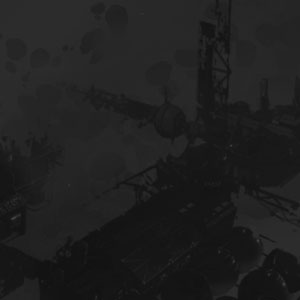NYND 3308: Day 40
11 Feb 2022Helios Eusebio
February 11, 330807:13:19
Lunar Hyperlight, Myriesly EC-B c27-8793 4 B
MET: 39:12:54:09
Our time at the galactic core is coming to a close. We have just one more day here and then we're heading to our final waypoint. Given that it's in the opposite direction from the core, we'll be closer to home next week than we are right now.

We decided that this would be a good time to look for some exobiology sites. Namely since we'd never really had a chance to explore the immediate vicinity around Sag A*, usually just flying straight to the Black Hole and back again. Surprisingly, we didn't find a lot of worlds with biological signals on them and the few we did find were consistent with the worlds we'd seen so far on this expedition. Nothing inherently wrong with that, just means that our theories for which environments give rise to certain life forms are proving more and more accurate by the day.

There is one thing that was important about this hop. This was the first time we'd crossed into the "northern" part of the galaxy. While we've previously traveled to Sag A*, we've never gone past Sag A*. We didn't go very far, just a hundred light years or so, but the distance isn't the significant thing about this hop. It's the fact that we're acknowledging that there's a whole half of this galaxy that we've never been to. And, logically, that's going to eventually be our next big trip: a journey to Beagle Point. Not just going to a far out part of the Milky Way, but crossing the entire galaxy and going all the way back.

We wouldn't be the first ship to make the trip to Beagle Point and we certainly won't be the last. But just because the road is travelled doesn't mean its known. We've discovered a lot of stars and planets and other objects on this mission, but it's barely a drop in the bucket. Universal Cartographics estimated at the start of the year that of the 400 billion stars in this galaxy, we've only visited slightly over 222 million of them, or .05% of the galaxy.
Such a number is awe inspiring and humbling all at once. While it's remarkable to think we've been able to explore so much in just a few years, at the same time it shows us just how much is still left to see. We can never hope to push back the curtain completely (even I probably won't live to see the day the galaxy is completely charted), but we can hope to shed light on the black. That's what the expeditions who came before us have done and that's what we do here today.
Maybe one day we could save up enough money to take Spaceball Two on an expedition of its own? If we did, it'd be a lot more elaborate than just a trip to a region of the galaxy and back. Maybe we could fly along the rim and circumnavigate the entire Milky Way? It wouldn't be a first, but we could do it, and maybe do some better exploration of the edge of the disc than ever done before.
One lap of the Milky Way....has a nice ring to it.

We're back on Lunar Hyperlight now. The carrier has moved to a system adjacent to the remnant, perhaps to better examine its external structure. Either way, can't deny the view. The brilliant purple and pink coloring of the dust clouds stands out against the burnt orange of the core. Honestly, you'd never think that at the center of that remnant lies a Black Hole.
Now we need to make some decisions about how we're going to spend our final day in the core. Then it's time to start back home.
